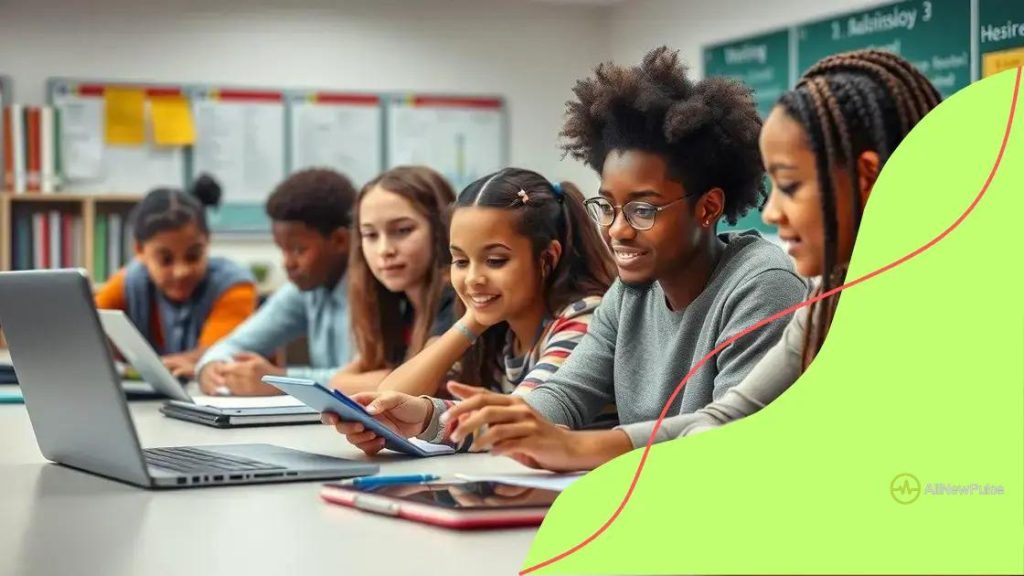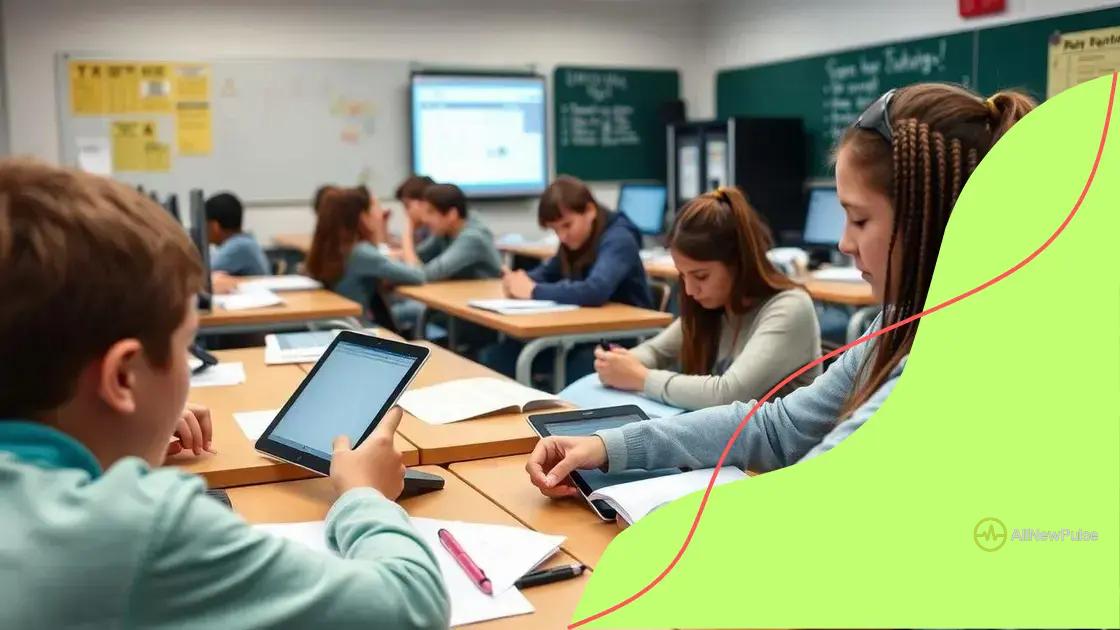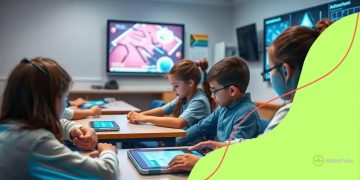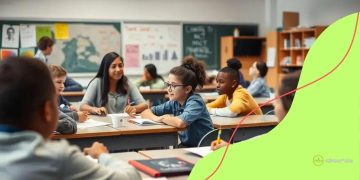Innovations in student assessment and evaluation techniques

Innovations in student assessment and evaluation techniques involve adaptive systems, technology integration, and personalized approaches that enhance learning and accurately measure student engagement and understanding.
Innovations in student assessment and evaluation techniques are changing how educators gauge learning. Have you noticed how traditional methods sometimes fall short? Let’s dive into new approaches that promise to enhance educational outcomes.
The evolution of student assessment methods
The evolution of student assessment methods has transformed how teachers and students engage in the learning process. In recent years, educational practices have advanced significantly, leading to more effective ways to evaluate student understanding. This is vital for ensuring students acquire the necessary skills and knowledge for success.
Shift from Traditional to Innovative Assessments
Traditionally, evaluation methods relied heavily on standardized tests and quizzes. However, as education evolves, there’s a growing focus on incorporating various assessment strategies. These methods not only gauge student performance but also foster a deeper understanding of the material.
- Project-based assessments allow students to apply their knowledge in real-world contexts.
- Formative assessments provide ongoing feedback, helping students identify areas for improvement.
- Peer assessments encourage collaboration and critical thinking skills.
Moreover, technology has played a significant role in this shift. With online assessments and interactive learning platforms, educators can gather data efficiently and analyze performance trends over time. Innovations in assessment include the use of gamification, which encourages student engagement through game-like elements.
Personalized Learning Environments
As we explore the evolution of assessment methods, it’s essential to mention the rise of personalized learning environments. These platforms cater to individual learning styles, providing tailored assessments that meet each student’s unique needs. This level of customization helps ensure that no student is left behind. Teachers are now better equipped to create assessments that reflect the diverse abilities in their classrooms.
In addition to personalized assessments, student portfolios are becoming increasingly popular. These collections of student work showcase progress over time and allow educators to assess growth holistically. By focusing on a broader range of outputs, teachers can gain a comprehensive view of each student’s learning journey.
As we move forward, it’s clear that assessment methods will continue to evolve. Embracing these changes can lead to enhanced student success and a more engaged learning environment. The evolution of student assessment methods demonstrates a commitment to improving education and addressing the needs of all learners.
Benefits of innovative evaluation techniques
The benefits of innovative evaluation techniques have become clear in modern education. These methods do more than just test knowledge; they enhance learning experiences for students. Instead of solely relying on traditional exams, educators can now incorporate various assessments that cater to different learning styles.
Enhancing Student Engagement
One of the most significant advantages of innovative evaluation techniques is their ability to boost student engagement. When students take part in creative assessments, they are more likely to be invested in their learning. This interactive approach helps them understand the material better and retain information longer.
- Project-based assessments encourage collaboration among students.
- Group presentations build confidence and communication skills.
- Interactive quizzes can make learning fun while assessing knowledge.
Additionally, innovative evaluations foster a deeper level of critical thinking. Instead of memorizing facts, students analyze and apply their knowledge in practical scenarios. This shift not only prepares them for real-life situations but also enhances their problem-solving abilities.
Providing Personalized Feedback
Another essential benefit is the ability to provide personalized feedback. Traditional assessment methods often lack the opportunity for teachers to give detailed comments on student performance. However, through methods like formative assessments, educators can tailor their feedback to meet individual student needs. This can help students identify specific areas for improvement and guide them on their learning journey.
Moreover, personalized feedback creates a supportive learning environment. When students receive constructive criticism, they are more likely to feel encouraged to improve. This positive reinforcement is crucial for their academic growth and well-being.
By implementing innovative evaluation techniques, teachers can create a more dynamic classroom experience. These methods not only enhance student learning but also promote an atmosphere of creativity and collaboration. As education continues to evolve, embracing these techniques can lead to a more effective and inclusive learning environment.
Combining technology with traditional assessments

Combining technology with traditional assessments is revolutionizing education. This blend allows teachers to utilize the best aspects of both approaches. By integrating technology, educators can enhance efficiency and effectiveness in evaluating student performance.
The Role of Technology in Assessments
Technological tools have changed how assessments are conducted. For example, online quizzes provide instant feedback. This quick response allows teachers to identify learning gaps right away. Additionally, data analytics can track student progress over time, enabling tailored instructional strategies that suit individual needs.
- Digital platforms offer interactive assessments that engage students.
- Automated grading reduces administrative workload for teachers.
- Multimedia formats can assess a wider range of skills.
Combining these technologies with traditional methods, such as essays and projects, helps create a comprehensive learning experience. Students experience various assessment formats, which allows them to demonstrate their understanding in multiple ways.
Benefits of an Integrated Approach
One of the significant benefits of merging technology with traditional assessments is enhanced student engagement. In-class activities that use technology can capture students’ interest and motivate them to participate actively. This engagement leads to deeper learning and retention of information. Furthermore, by utilizing both methods, students learn to adapt their skills across different platforms.
Another essential aspect is the flexibility this combination offers. Students can complete assessments at their own pace using online tools, while still benefiting from the rigorous structure of traditional assessment methods. This balance can lead to improved academic performance and greater overall satisfaction.
In this dynamic learning environment, teachers are better equipped to provide a personalized education experience. By observing student interactions with both technology and traditional assessments, educators can refine their teaching methods and provide support where it is needed most. Ultimately, the combination of these two approaches represents a significant step forward in student evaluation.
Measuring student engagement and understanding
Measuring student engagement and understanding is essential for creating effective learning environments. Educators need to know how well students are interacting with the material. This insight allows teachers to adjust their teaching strategies to meet varying needs.
Techniques for Measuring Engagement
There are several ways to gauge student engagement in the classroom. Traditional methods like observations can provide valuable insights. However, combining these methods with innovative techniques can yield richer data.
- Surveys and questionnaires offer direct feedback from students about their interests.
- Learning analytics track how students interact with digital content.
- Classroom polling encourages real-time feedback during lessons.
By integrating these techniques, educators can create a comprehensive picture of student engagement. This understanding can reveal patterns that inform instructional changes and boost student motivation.
Understanding Student Comprehension
Measuring understanding goes beyond checking if students can recall facts. It involves assessing their ability to apply knowledge in new contexts. Formative assessments are a powerful tool for this purpose. They allow teachers to evaluate ongoing learning and provide feedback before final evaluations.
Methods like think-pair-share encourage collaboration. This technique allows students to discuss concepts with peers, facilitating deeper understanding. Additionally, using open-ended questions in assessments helps teachers gauge critical thinking skills and the ability to articulate reasoning.
Tracking progress over time with assessments helps identify areas where students struggle. By focusing on these areas, educators can provide targeted support that meets individual needs. Ultimately, understanding student engagement and comprehension creates a more inclusive and responsive learning environment.
Future trends in student evaluation
Future trends in student evaluation are reshaping how education is delivered. As technology advances, new methods emerge that allow for more personalized and effective assessments. These trends focus on adapting to the needs of students and enhancing their learning experiences.
Adaptive Assessment Systems
One significant trend is the rise of adaptive assessment systems. These systems adjust the difficulty of questions based on a student’s performance. As students answer questions, the system learns their strengths and weaknesses, providing a tailored experience. This allows for a more accurate measurement of a student’s knowledge and skills.
- Students receive immediate feedback on their performance.
- Lessons can be customized based on assessment results.
- This approach fosters a growth mindset by focusing on improvement.
Adaptive assessments empower students to take control of their learning journey. When students see their progress reflected in real-time, it boosts motivation and encourages deeper engagement with the material.
Incorporating AI and Data Analytics
Another emerging trend is the incorporation of artificial intelligence (AI) and data analytics in evaluations. AI can analyze vast amounts of data to identify patterns in student performance. This level of analysis provides educators with invaluable insights into how students learn.
Data analytics can pinpoint which teaching methods are effective and which need adjustment. By understanding these patterns, educators can design assessments that better meet students’ needs.
As we look to the future, project-based assessments are gaining recognition. These assessments allow students to work on real-world projects that demonstrate their understanding and skills. Such assessments not only measure learning but also prepare students for challenges beyond the classroom.
The future of student evaluation promises to be more engaging and relevant. Embracing these trends will lead to a more inclusive and effective educational system. By prioritizing student needs, we can create assessments that truly enhance the learning experience.
FAQ – Frequently Asked Questions about Innovations in Student Assessment and Evaluation
What are innovative evaluation techniques?
Innovative evaluation techniques are new methods that enhance the way educators assess student learning, often integrating technology and personalized approaches.
How do adaptive assessment systems work?
Adaptive assessment systems adjust the difficulty of questions based on a student’s previous responses, creating a customized learning experience.
Why is measuring student engagement important?
Measuring student engagement helps educators understand how actively students participate in their learning, allowing for adjustments to improve motivation and outcomes.
What role does technology play in student evaluation?
Technology plays a significant role by offering interactive tools and data analytics that provide insights into student performance and learning trends.





